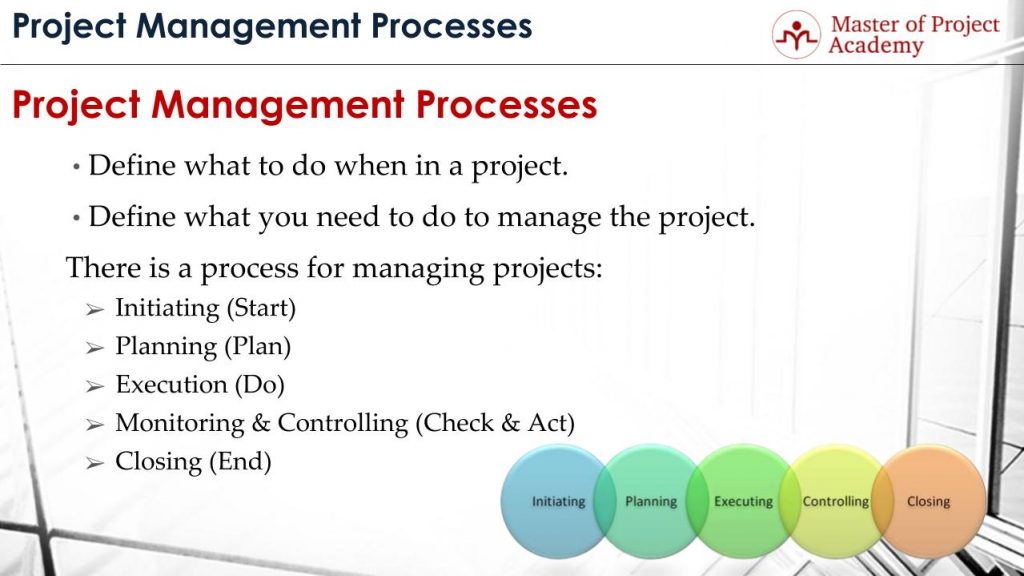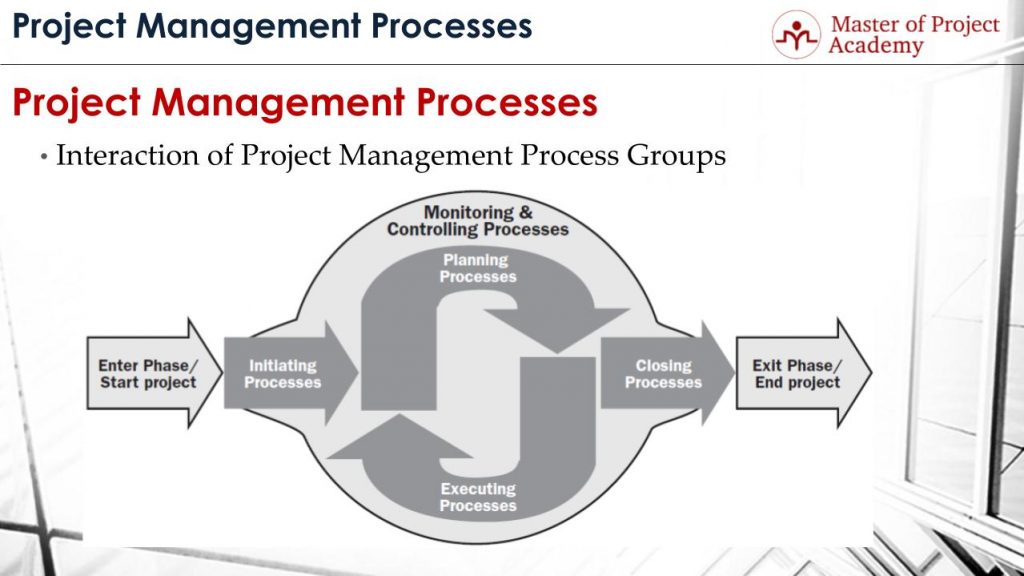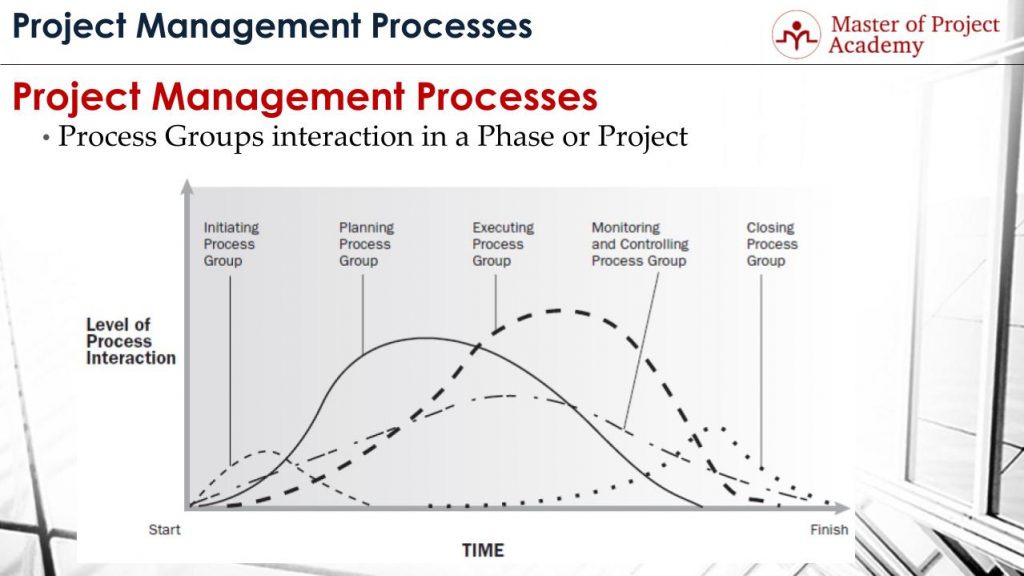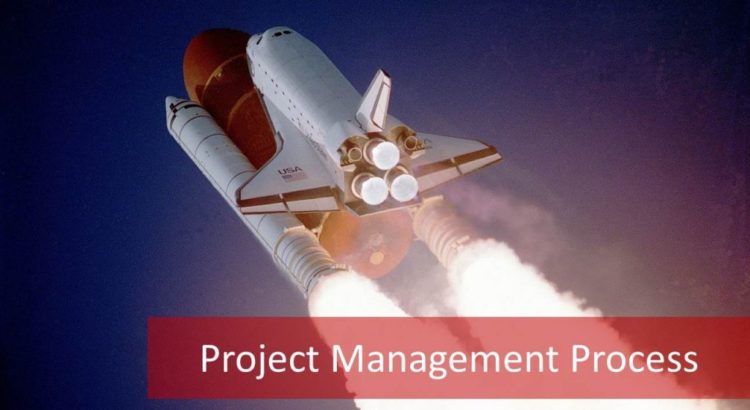There are many processes going on in project management from start to finish. Various project management process helps to manage a project in a structured and healthy way. In order to finish the project with desired outcomes, a framework should be set and during the project life cycle, these project management processes should be implemented accordingly. For instance, what needs to be in hand to determine a budget, what is required to complete the project schedule, and how the quality requirements will be determined? All these process groups are identified in the PMBOK Guide Project Management Body of Knowledge.
Attend our 100% Online & Self-Paced One-Hour Free PMP Training.
These are all accomplished by the project team members with the help of the project management process.
If you are a project manager looking forward to moving ahead in your career by learning project management knowledge areas and process groups, you can enroll in our CAPM® certification training to get certified.
What is the project management process? Which process groups are included in the project management process? What is the relationship between these project management process groups?
Let’s begin with a brief overview of the project management process groups.
What Are the Project Management Process Groups?
In the project management process, there are process groups named “project management process groups”. We can state five project management process groups. These project management process groups and their activities are:
- Initiating Process Group Activities: These activities mainly help to initiate a project.
- Planning Process Group Activities: These activities ensure proper planning of the project.
- Executing Process Group Activities: These activities help in managing the project work and help in producing the work or deliverables of the project.
- Monitoring & Controlling Process Group Activities: These activities help the successful progression of projects. Monitoring and controlling activities check whether the project goes as planned and whether there are deviations from the expected results. If there are deviations, project management aims to correct the variances to meet the project objectives.
- Closing Process Group Activities: These activities help to finalize project activities, document closing paperwork, and complete the project successfully.
Note that, project management processes are documented and controlled with the help of project management templates. You can see sample free project management templates to have an idea of how they work.
What is Project Management Process?
The project management processes define “what to do when” in a project. There are several activities from the initiation processes until the closure of a project. Each of these activities has a sequential order as well. For instance, can you purchase a tool that will be used in a project before the initiation of the project? Naturally, the answer is negative. Can you assign the resources for the project before completing the project management plan? The answer is again the same. Therefore, the activities which will be done and the steps which will be completed are all defined in an organized and structured manner. And this is done with the help of the project management processes.

But project management processes do not only define “what to do when” in a project. They also define “what you have to do” in order to manage project. So these processes also define what will be the inputs and outputs to complete an activity. For instance, the process of determining the budget will help the project manager to understand what she or he needs to do for completing the budget estimation of the project.
The Sequential Order
As we have stated above, there should be a particular order of project management processes to complete the whole project. This order is:

The first step: Initiating
At this stage, the necessary business case for starting the project is shaped. Then, the sponsor of the project, who will financially support it, will initiate the project start. The project manager will be assigned to manage and coordinate project activities.
The second step: Planning
At this stage, end-to-end project planning is completed. This plan includes cost management, scheduling, quality management, resource management, etc. details of the project.
The third step: Execution
This is the stage where the actual project output is delivered. Project deliverables are produced and delivered to the customer at this stage.
The fourth step: Monitoring and Controlling
This stage actually interacts with all other stages. Because the main purpose of this stage is to check whether the project progresses as planned. If there are any deviations from the planned targets or metrics, corrective and preventive actions regarding them are needed to be taken respectively.
Fifth and the last step: Closing
At this stage, project activities are finalized, and the paperwork for completing the project is finished. Lessons learned documentation is finalized and archived in the organizational process assets of the company.
Interaction of Project Management Process Groups

This figure illustrates the interaction of project management process groups with each other. As you see, entering phase is the start of the project. Once a project starts, initiating processes are triggered. These processes will help to initiate the project successfully.
Then, planning processes will take place and project planning will be done. Once the planning finishes, the project execution phase starts. During project execution, deliverables of the project are produced and delivered to the customer. As you see in the figure, planning processes and executing processes are in a loop. Because based on the actual outputs and actual results of the project, re-planning or re-adjustments might be needed to reach the project objectives. For instance, if the project is exceeding the budget which was planned in the beginning, corrective actions and re-planning must be done to correct these deviations.
The last step is the closing process, this will help in completing the project. Monitoring and Controlling processes cover the processes of the other four process groups. Because monitoring and controlling are done from initiation until the end of the project. In order to complete a project successfully, the progress, the metrics, and the measurements of the project must be taken into account. The reason behind this is to see whether everything is going as planned at the beginning.
The Level of Process Interaction in a Project

This figure shows the level of process interaction over the time in a project, or in a phase of a large project.
Initiating process group is active at the very beginning of the project, also its level is lower compared to other process groups.
Once the level of the initiating process group starts to decline, the level of planning process group activities starts to increase. Then the executing phase process group follows the planning process group and it reaches the highest level of interaction among all process groups. The last process group which is towards the end of the project or phase is the closing process group.
The monitoring and controlling process group has the longest duration in terms of process interaction in a project or phase. As we mentioned already, the main reason for this is monitoring and controlling processes to check all other process groups whether the project is healthy and will meet its objectives.



12 thoughts on “5 Critical Steps of Project Management Process | Project Management Process Groups”
Comments are closed.